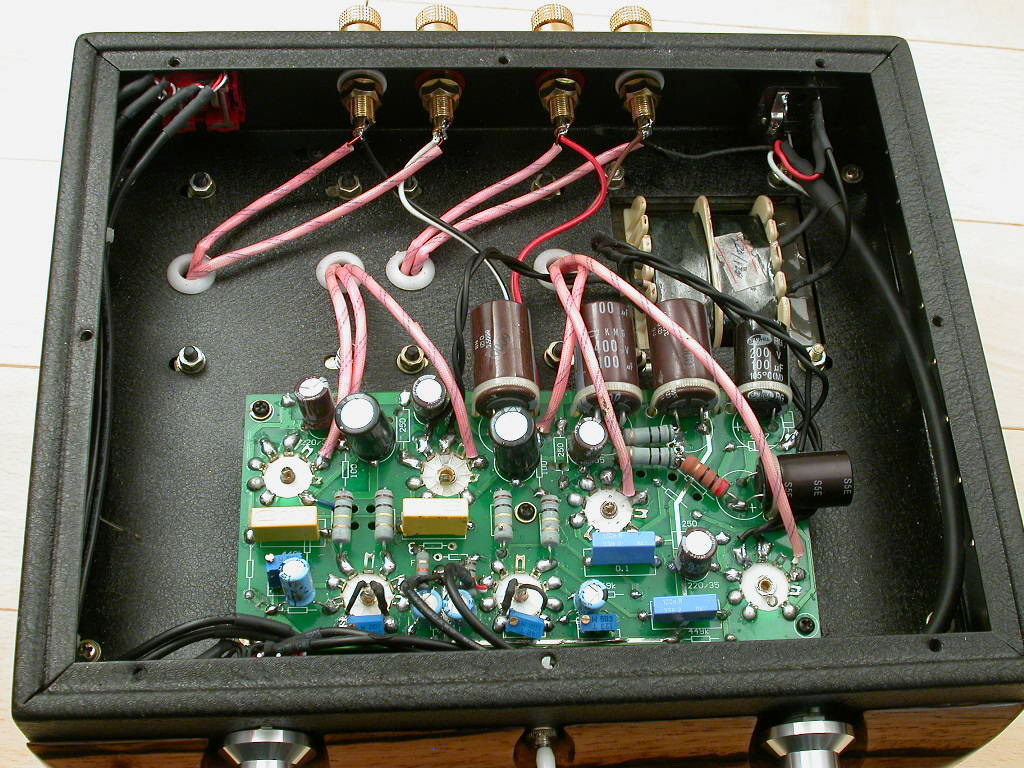I love making inexpensive amps for the public but there are limits. After reading the problems with tubestein I decided to take a look at just how cheap Chinese amps can be. WOW $230, postage paid!
Here's the problem. Chinese designers for some reason haven't gotten the message that reasonable damping (10) is important, low distortion is nice and noise is not nice. Even PrimaLuna, designed in Europe with the aid of Kevin Deal (the tube king) doesn't even get it. China is making everything under the sun to sell to the Western World. The Chinese look at things and copy them physically but they do not look into the longevity of materials used or bother to understand the underlying design principles. In their mind, if it looks like an amplifier and amplifiers something then it is an amplifier. Those specs you read may be totally made up, pure fiction. These amps never get measured (unless they cross my bench) and when I do measure one I am sadly disappointed.
So if you get one of these tubes amps are you really getting what a tube amp is all about? The low damping will make your speaker sound different and not like the speaker maker intended. The bass will be bumped up at resonance and there will be peak wherever the impedance peaks and dips at the dips. In essence the low damping will make the speaker response follow the impedance curve. The high distortion will make simple music sound more lively and complex music sound muddy. The noise will just be there to annoy you till the amplifier breaks and then will be quiet.
I found this picture from tubestein on eBay. What do I see here? Two little blue trim pots front and center. Just hung on the board, not properly mounted, likely to fall off when you try to adjust them, and what are they there for anyway? Being up by the driver they probably aren't bias pots but something to fiddle with the driver tube. Poor designs often have trim pots because the circuit is fussy and they don't know how to make it unfussy. So they put in a pot that they know how to adjust with their equipment, but good luck finding out how you or your tech will figure it out. Because the circuit is fussy it will need to be adjusted when you change the driver tube. Just how are you going to do that? I have worked on many an amp where I had to put take off my technician hat and put on my engineering hat to analyze the circuit and see what they were up to and it usually was no good.

Music Reference has always been a good value product getting $$$ in Stereophile Rec Components for years. For $550 we offer a ready to play 2.5 watt per channel, SE Triode amp on bread-board that you can enclose yourself or use it as is. I would love to make amps for $250 but we don't have the advantage of $10 a day labor. However other than capacitors the amp is 100% USA made with USA materials and we make the output transformers ourselves, something we are well known for. In this video I show the amp and explain the circuit in detail.
https://www.youtube.com/watch?v=7qg9ot20EdAWe have figured out how to make a very nice line preamp in a plastic case which we sell for $450 completely finished ready to play.
http://tubeaudiostore.com/tubepreamp.html Unlike noisy Chinese stuff, this unit is dead quiet (less than 10 uV output noise), has low distortion (less than 0.1% at 1 volt out), nice parts and we do know how to solder. These are incredible specs which cannot be easily matched. Sadly the Chinese rarely give you a noise spec at all. However they will put a number down like Signal to Noise ratio -90 db. Without a reference level that is meaningless and probably not true anyway. FYI 10 uV is 100 dB below 1 volt which is your typical amp input level. The difference is that we have standards that result in good performance. If we make something inexpensive we do it not by lowering our standards but by reducing cost in some other way like cosmetics and simple packaging.
For those living in the SF Bay Area I will be teaching amplifier building classes in January at the Randall Museum. There you can build something very nice, learn to solder well and learn how amps work.